#1500 years
Explore tagged Tumblr posts
Text

i still don’t think i’m over the implications of this scene
#he waited.#1500 years later#he’s still there#god they make me sick#merlin emrys#merthur#arthur pendragon#bbc merlin#merlin#fanart#sabeldraws#screencap redraw#merlin x arthur
4K notes
·
View notes
Text
fabian is such a sweetie and he will not convince me otherwise. genuinely there’s no reason for him to make up with gertie bc the rest of them have enough good standing with her to work with her, he fully did that for kristen. the way he approached it too, wasn’t like “oh im gonna get her off my back so we can deal with the honey thing” no it was pure good soul lou wilson shining through fabian going “hey if there’s even a BUMP on this road to love for my friend because of me? i’m repaving the entire fucking street lets go”
#i love my soft boy#why do none of these children know how to express love properly#you’d think they have enough parents with the polycule#fantasy high junior year spoilers#untapped rage#fabian aramais seacaster#fabian seacaster#lou wilson#kristen applebees#gertie bladeshield#kristen x gertie#fantasy high#fantasy high junior year#dimension 20#fhjy#liveblogging#500#1000#1500#2000
2K notes
·
View notes
Text
Explore the Mystical Jagannathi Devi Temple in Kullu | Sacred Serenity Awaited
Nestled amidst the picturesque landscapes of Kullu Valley in Himachal Pradesh, the enchanting Jagannathi Devi Temple stands as a testament to the rich cultural and religious heritage of the region. Situated approximately 10 kilometres away from the heart of Kullu Town, this sacred abode is located in the quaint village of Bhakhali, which is predominantly inhabited by Brahmins. Also known as…

View On WordPress
#1500 years#Bhakhali#Jagannathi Devi Temple#Jagannathi Devi Temple in Kullu#kullu#Kullu valley#Lord Raghunathji#Mata Bhubaneshwari Devi
0 notes
Note
thinking abt hungergames yuri... how do u feel abt madge and katniss <3 both as friends and as a romantic pairing :>
rereading a book you originally read as a young teenager when you're an adult is a really fun experience if only because i can now appreciate how insanely Sixteen Years Old katniss everdeen is. "yeah she talks to me at school and sits with me at lunch and she came to say goodbye to me and cried and gave me a pin that belonged to her dead aunt but idk if we're like FRIENDS or anything" KATNISS THAT GIRL LOVES YOU. JUSTICE FOR POOR MADGE SHE WAS TRYING SOOOO HARD.
#tldr i like it. fun pairing both platonically and romantically#i do wish that katniss would get her HEAD OUT OF HER ASS and tell us literally ANYTHING about these side characters other than their names#but yk. 16 year old girl. maybe i can forgive her#that was really the biggest surprise of sotr actually. that haymitch actually bothers to tell us things about all these side characters#katniss doesnt even mention her MOTHERS NAME. in something like 1500 PAGES OF WRITING#and meanwhile haymitch is like yeah this is lenore dove daughter of maude ivory cousin of burdock everdeen#burdock everdeen who is of course the son of barb azure and in love with asterid march.#FULL NAMES TOO. I DONT THINK GALE GOT A LAST NAME UNTIL BOOK 2#anyway. shoutout wlw katniss i know in my heart of hearts you would be a great lesbian queen#sotr spoilers#< in tags#asks
158 notes
·
View notes
Text

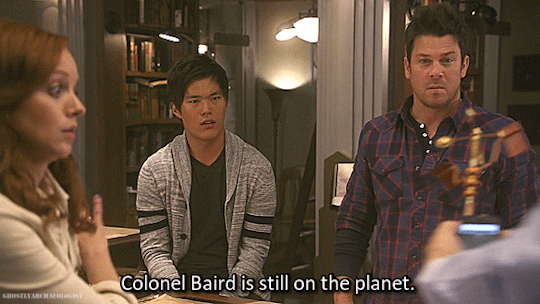






"No one beamed her anywhere!"
The Librarians S01E09 And the City of Light.
#the librarians#jenkins#cassandra cillian#jacob stone#ezekiel jones#john larroquette#lindy booth#christian kane#john harlan kim#'don't you get snarky with me‚ mr stone. i have almost 1500 years of snarkiness on you'#ghostly'sgifs
163 notes
·
View notes
Text


#lego monkie kid#monkie kid#monkie kid fanart#lmk#lego monkie kid fanart#lmk fanart#lmk mayor#monkie kid mayor#lmk lady bone demon#monkie kid lady bone demon#(puts these two into a box and locks them away for 1500+ years)
202 notes
·
View notes
Text
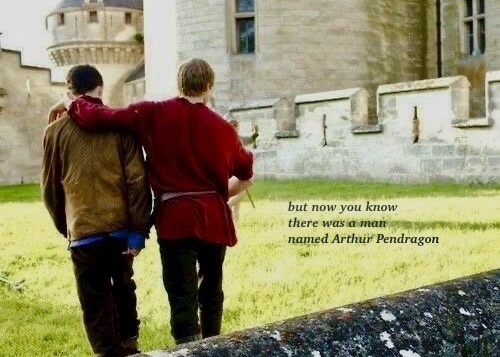




#i can see merlin finally telling his story after 1500 years#the last sentence is so painful#but it is also very true#he doesn’t have a picture of arthur#and after a thousand centuries he doesn’t remember him as he would#and oh arthur gave him a purpose and someone to love unconditionally#so yes be saved him in any possible way too#merthur#merlin#bbc merlin#arthur pendragon#titanic#merlin fandom#bradley james#colin morgan
314 notes
·
View notes
Text

Child's armor ordered by Holy Roman Emperor Maximilian I for his 12-year-old grandson, the future Emperor Charles V.
Early 16th century
#reddit#artefactporn#roman#lepke2011#child's armor#armor#holy roman emperor#maximillian i#12 years old#grandson#emperor charles v#rome#1508 - 1519#1500s#16th century
60 notes
·
View notes
Text
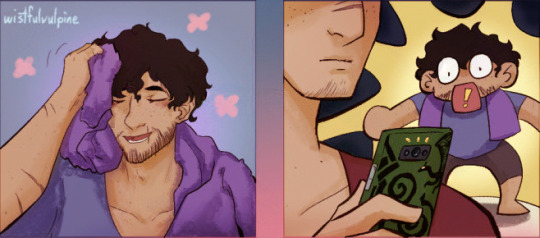



an album titled "catching up 👑🧙♂️" // glimpses of a peaceful life
#bbc merlin#arthur pendragon#merlin emrys#merthur#merlin fanart#merthur fanart#kit draws#i put a random number idk how it would've been for arthur and i'm too lazy to look it up besides 1500 years+#december is for comfort - the rest of the year is free rein#they get a soft epilogue etc merlin deserves something after waiting a literal millennia
484 notes
·
View notes
Text
aelwyn is the cunty neurodivergent rep we need. the look on her face when kristen is actually upset/hurt and she immediately backtracks- oh shit, i thought we were playing! we were joking! don’t friends bully each other? how else is affection expressed but through violence?
#not understanding social cues#but in the opposite way of a lot of media#what do you mean it’s unkind to punch my friends#it’s a love tap#how else do i express affection?#aelwyn abernant#aelwyn o'shaughnessey#fantasy high junior year spoilers#untapped rage#fantasy high#fantasy high junior year#dimension 20#fhjy#kristen applebees#liveblogging#500#1000#1500
2K notes
·
View notes
Note
What’s the architecture/layout of old Bur, how do modern people perceive the ruins?
The city in its peak was very large and spread over both shoreline and a network of small islands. These islands comprised a waterfront district connected by a network of bridges and canals, where a large portion of its non-agricultural lower class lived.
It had a fairly well organized and efficient freshwater+sanitation system across most of its span (the canal district had less effective plumbing largely due to logistical difficulties, most of its wastewater was instead flushed by rain powered cisterns). The water system was powered by the Hsuke river and made fresh water readily accessible throughout the majority of the city (though few homes had direct freshwater plumbing). It had several major public baths, and the homes of the wealthiest members of society had their own private bathing pools.
In this part of the world, it is broadly regarded as once being one of the most beautiful cities to have ever existed. It was particularly noted for its water gardens (still a fixture of present day Burri culture) which were absolute marvels of engineering for that period, with the majority of these being entirely artificial and supported by its network of aqueducts. These hosted thousands of ornamental plants, fish, and fowl, as well as fruiting trees and shrubs. They were treated as a public work meant to benefit all citizens, and existed throughout the city.
The palace in particular was noted as impressive, in part for its architecture but mainly for its gardens. These hosted 'exotic' plants and a menagerie of animals from across the empire's territory, and existed in part as a symbol of the state's power and reach. It was a trend for emperors to bring in the fiercest animal from each conquered province to the grounds, with the an-nechoi being the beast of choice from the lands across the sea to the east, with one (Probably erroneously) cited as killing thirty servants in the process of moving it into the gardens.
The palace was located within the temple district. This district housed over a hundred shrines to the various lesser deities of the pantheon, and temple complexes to the seven chief deities (the firstborn gods who created the world, all other gods were later descendants). Old Burri temples were Kinda similar in shape to a ziggurat, though had an accessible interior space and a central tower which housed the shrine. At this time, the chief gods were believed to physically inhabit their temples. Each god had its own high priest permitted to attend to their shrine, with the emperor being the high priest to Inanariya (king of the gods) and the only person permitted to directly commune with this deity. The foundations to these temples are relatively intact in the present day, though none of the towers remain (collapsed in earthquakes with no one to rebuild them).
The city was heavily fortified, having one external wall surrounding most of its length, and an internal wall surrounding the palace/temple district (which doubled as a fortress).
---
The period of sea level rise began with a 500ish year period of mostly gradual increase, which occurred slowly enough that most infrastructure could adapt very easily and the problem went unnoticed by most (the city of Bur experienced most of its Growth during this time). It then culminated with about a century of (relatively) rapid rise, which is the direct cause of the city's abandonment.
The canals flooding had always been a problem during storms, but this began to occur with notable frequency, alongside the water level as a whole rising quickly enough to be noticed on an immediate human timespan. The canal district was maintained for a while by rerouting some of its waterways and building up barriers, but it was the first part of the city to be abandoned. Things got more serious when the mainland parts of the city grew increasingly impacted by storm surges that never seemed to fully retract, and major parts of its surrounding farmland were hit by surges and tidal waves, and rendered too saline to remain arable.
The actual single biggest cataclysm was the collapse of the city's mainland sewage system. It was built with flood canals as a failsafe, but these were built to withstand heavy rain rather than an encroaching ocean. Storm surges would cause large segments of the city to be flooded with sewage (including some of the freshwater plumbing), and serious disease outbreaks would follow.
These issues were enabled/exacerbated by earthquakes (the region is geologically active and this isn't unusual) that further damaged and mingled the sewage and freshwater systems. One earthquake and its subsequent tidal wave was a turning point, and the resulting breakdown of (already strained) infrastructure rendered a large swath of the city uninhabitable in the space of about a week. This also just caused immediate damage to much of the city's architecture/walls, and collapsed the tower of the temple to Inanariya (never a good sign). This is when the full exodus began, first with people flocking to un-flooded parts of its city and farmlands, and those who could afford it fully relocating to other cities/towns.
All of this issues were compounded by the 1st Burri Empire already being in a period of collapse at this time. This was largely a matter of simple overextension. Its borders were constantly under attack by rival states/its victims, sometimes with great success. Bur's own population had burgeoned well past what the imperial core land could sustain, and its cities relied predominantly on extraction of foreign grain/goods to feed their people. It lost most of its eastern land holdings in a fairly rapid timespan (overextended with wars at multiple fronts), which caused frequent famines in its core.
This put pressure on its final emperors to invest in increasingly desperate expansionist projects, while attempting to keep up public morale with lavish public works and objectively stupid vanity projects. The attempt to excavate a canal at the Viper seaway's 'tail' (one of the few eastern regions it retained secure control of at that point) was in part a desperate act to revive its economy by opening up/monopolizing a new trade system. The amount of money and manpower sunk into this ultimately doomed project was followed by Bur being fully ousted from its eastern holdings, and was one of the final straws in its collapse.
People in the city of Bur proper were dealing with the double front of starvation and their homes + streets + immediate water supply being flooded with seawater and literal human feces. These issues impacted the lower classes first and most severely, but ultimately transcended class boundaries. Famine grew more and more rampant, not only with the loss of the colonial holdings that supported the population but of farmland in the imperial core- much of the city of Bur's immediate farmlands were unproductive due to repeat inundation with saltwater during surges, and the farmland along the Yamage river to the north was rapidly being captured and pillaged by the Hsem (historical enemies, a nomadic group with a khait warrior culture from further west).
All this was fucking unlivable in of itself, but also had very obvious implications in the context of Burri emperors also being high priests and the chief intermediary between the gods and the people. Not only was the government failing to sustain its citizens to begin with, but signs of divine disapproval were deeply apparent.
So the last days of the 1st Burri empire were a chaotic period of civil unrest, most acute in and around city of Bur proper. This involved near-constant peasant revolts and several attempted coups. The last Burri emperor (of the First empire) ultimately fled the capital of Bur and reestablished in Titenegal, declaring it the new capital. This was then sacked by the Hsem within a year and after that it was fucking Joever.
The city of Bur was functionally abandoned by this point. People still Lived There and there were several attempts to set up a new government, all of which failed in the short term. After the collapse was complete, its inhabitants were mostly just peasants who built up new homes further inland and sustained themselves on the remaining farmland. Few people lived permanently in the city proper due to all of its intact infrastructure being effectively non-functional without the governmental bodies/human labor to sustain it.
---
It should also be noted that it was Extremely not just Bur that was flooded, the sea level rise was worldwide (resulting from a collapsing ice sheet) and almost Every coastal city during this period experienced the same issue. Bur's demise was just notably dramatic in that it was once the most heavily populated human city that has Ever Existed, and directly correlated with the fall of the empire it hosted.
The flooding was fairly gradual, but it's been 7 centuries since the first Burri empire's collapse and the fall of its capital city, and many contemporary records were lost to the immediate chaos and to the large span of time since. Cultural memory tends to reframe the flood VERY rapid on a human scale, many of the stories describe the city being swallowed in a single wave as an act of divine punishment (the popular notion at the time that the last emperors deeply displeased and shamed the gods has stuck into the narrative, often exaggerated into stories of them being horrifically debauched blasphemers guilty of the worst disgraces imaginable). Even more conservative accounts tend to imagine the totality of the destruction taking place over the span of about a year (merging the memories of the immediate earthquake devastation with more gradual elements of its slow flooding). People widely believe that most of its residents drowned in the city's cataclysmic demise, and that the ruins are now Extremely haunted.
The state of the flooding is not 'completely under the sea' and you can still walk/wade through most of the inland ruins (the canal district is effectively submerged, with most structures that Would be above the water level having collapsed against the strain). As such, some people Do Live Here. These people are mostly smugglers and pirates using the ruins as a hideout, and/or opportunistic hunters and fishermen who won't let ghosts stop them. Entering the city ruins is currently forbidden (largely Because of the criminal nature of basically every motive to go here (even hunting, which is considered poaching)), but enforcement of this rule/active patrols to prevent entry are inconsistent.
The majority of Old Bur's inhabitants are animals. The un-flooded parts of the city and its gardens are now a host to a thriving community of native plants and animals (and a few descendants of escaped non-native zoo animals/ornamental plants that adapted well to the conditions).

The egret shown here is a foreign species originally brought as an ornamental bird. In the centuries since its first import, it has become widespread and occurs on both sides of the Mouth seaway. It can hunt in both freshwater and saline environments, and a very large population lives permanently in the ruins of Old Bur.
Its common name is the ghost egret. Contemporary Burri folklore holds that the ghost egrets of Old Bur are literal ghosts, carrying the souls of those who died in the cataclysmic floods.
#[[JUST REALIZED you didn't even fucking. ask about the timeline of the flooding I just kinda went for it]]#[[its relevant to its contemporary state I guess????]]]#Added the photo without linking to the original post becasue it is WILDLY outdated.#Among other things I cited the population of the original city of Bur at 'over a million people'. Which is contextually ridiculous#Also (because this probably gets confusing) everything here describes the first of two empires out of Bur which was by far#the larger one. The second had a similar pattern in its downfall (overextension - famines at home - war and revolts at multiple fronts)#but was significantly less dramatic and had a much cleaner rebound (it ended in a successful coup that the contemporary#Burri Republic directly descends from)#I used to describe 3 Burri empires which. I don't know why I did that because the 1st of the three was an ANCIENT land empire#stemming from further west where contemporary Bur was its easternmost extent of Conquered lands. This collapsed like ~1500+#years before present and has no directly obvious impact on modern conditions whatsoever (it DID have major impacts#though: it's what first brought khait to this region and some of its ancient roads are still used in the largest continuous land#trade network in the northern hemisphere)
102 notes
·
View notes
Text
I feel like we don't talk enough about the potential Merlin has as an immortal person. And when I say "potential" I mean angst. The ANGST. Merlin forgetting faces. Him trying to function like a normal person but he can't, because he realized he forgot Hunith's face. How could he possibly forget his own mother's face, who raised him with oh so much love?! What color were her eyes? Were they brown? Blue? Green? Him forgetting why he's waiting by the lake. "Wait, why am I staring at that lake?" *checks a crumbled note from his pocket* "Oh right, Arthur." Him forgetting events or how they really happened. For example, I can imagine him laying awake at night trying to remember how he met Gwaine. Did they meet in a tavern? In Camelot? During a bandit attack? No wait, that's how he met Lancelot, wait, no, NO, THAT'S NOT- THAT'S NOT-
#basically merlin's memory becoming shit after 1500 years#because he's still an old man wether his body can age or not#come on he's been alive for so long it makes sense that his memories would get scrambled into one big mess#merlin not remembering his friends and family's faces... not remembering ARTHUR'S face... oh...#i have been having merlin brainworms lately for some reason#bbc merlin#merlin emrys#arthur pendragon#gwaine merlin#hunith#immortal merlin#merlin headcanons
44 notes
·
View notes
Note
You're the only person i follow who posts about thomas sanders
And i only watch him for sanders sides, i'm not really in the fsndom online, so i guess you are the best person to ask this
Why does thomas take so long to upload new sander sides?

ten questions scientists still can't answer, anon
#to expand beyond the cynicism#idk when you joined the fandom but i was there in like The Era. 2017. virgil's name reveal. i was 14 & Unwell#wrote a lot of fic (and i mean a Lot of fic) & was in the Wattpad Scene of it all#(not to do all the fandom hierarchy popularity bullshit but if anyone's wondering why i have 1500 followers on wattpad that's why)#anyways. 5 or so years go by. fans get older. content (or at least good canon content) is few & far between#i move on. move to ao3. move to tumblr & other fandoms#idk how i found the crit tag but it's a good place as an 'ex-fander' so to speak to vent frustrations#you'll find a lot of stuff in the tag on your question anon#basically my take is thomas wants all the money from the series & merch & patreon without actually putting in the work#as he's lost passion for the series but has hyped it up way way too long to back out now#idk he's kind of a shit person from what i've seen though again there's more elequent posts on it than this tag dump#i'll leave the appropriate tags below#ts crit#ts critical#ts criticism#asks
71 notes
·
View notes
Text
hate hate haaaate marius and in the books it's infinitely more fucked up that he turns armand when he does (aged 17) and then the cunt "dies" so armand never really gets the chance to grow up or grow out of what marius asked of him before he's met with immeasurable grief BUT one thing that's really interesting about the show timeline is that there's an additional ten years before marius turns armand and there's SO MUCH that could happen in those ten years in terms of armand deciding whether or not he wants to stay with marius (and, then, why he does choose to stay) and actually having the wherewithal to make that decision.
#iwtv amc#like it's just more interesting from armand's perspective imo. abuse and coercion does horrible things to your mind#and everything that complicates your blamelessness in the trauma. like. for instance.#you being an adult for most of the relationship. or. say. you deciding to stay because its the 1500s and marius's studio#is pretty luxurious all things considered.#is going to make it harder to move past. which especially for show!armand#i think makes sense since he's constantly trying to recreate his dynamic with marius with his new companions#and that. uhhh. questionable agency armand has in his years spent with marius#will lend itself better to marius' reappearance later in the series i think#iwtv#interview with the vampire#iwtv meta#armand#the vampire armand#armand iwtv#armandposting#thunder rambles#marius de romanus
59 notes
·
View notes
Text
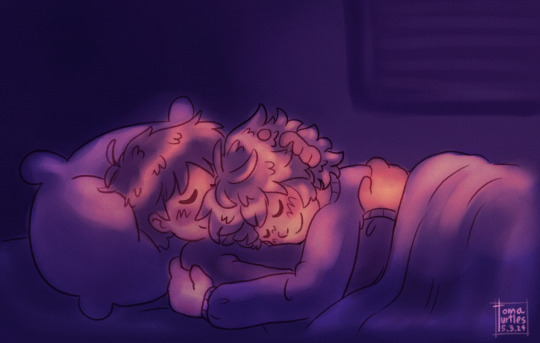
IT'S KAWOSHIN DAY!!! As well as the last day of Kawoshin Week :') It's been such a blast, gonna miss it when it's over
Kawoshin Week Day 7: Cuddling/domestic fluff! + Sleepover and Spinoffs (again)! Based on the Campus Apocalypse sleepover chapter ☺️
#shinji ikari#kaworu nagisa#kawoshin#neon genesis evangelion#campus apocalypse#nge#nge ca#toma draws#kawoshinweek2024#CAwoshin again! wanted to ensure my favorite niche kawoshin got some representation in the week in case no one else did stuff with them...#which wasn't the case since literally every fill for the spinoffs prompt has been campus apocalypse!!! which i'm overjoyed about 🥺#my second option for today was finishing a sonicverse kawoshin wip for the free day prompt. but i already included sonic in the week with-#the song lyrics i used for my day 5 piece so i went with this instead#also went with this because. um. my original plan for today was actually. a CA fic for these same prompts set after said sleepover chapter#but i'm neither fast nor confident at writing so i. haven't finished it (i DID get it to almost 1500 words so far though! progress)#so i thought i'd color something i drew while thinking about it :')#i did it while taking a break from my day 5 piece and was pretty loose about it so it's not super polished and i'm not sure how i feel abt-#the colors but! it hits the soft cozy vibe i was going for and that's good enough for me#if i manage to finish the fic within the year i might still include it as a very late week entry... no promises though. we'll see
113 notes
·
View notes
Text
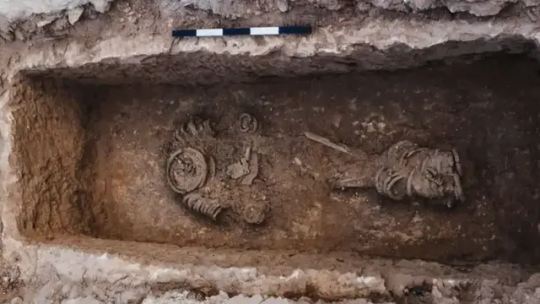
1,500-Year-Old Skeleton Found in Chains in Jerusalem was a Female 'Extreme Ascetic'
Not far from Jerusalem, archaeologists have discovered the fifth-century burial of a person wrapped in heavy metal chains. But the Byzantine-era grave held another surprise: The person who had practiced religious bodily punishment was female.
Excavations of a series of crypts at the Byzantine monastery at Khirbat el-Masani, about 1.9 miles (3 kilometers) northwest of the Old City of Jerusalem, revealed the skeletons of several men, women and children. One tomb contained the poorly preserved bones of an individual wrapped in chains. The corpse was not constrained for nefarious reasons, archaeologists suggested. Rather, the chains were used by the person during life to limit mobility as a part of a religious ascetic lifestyle. Initially, the Israel Antiquities Authority, which oversaw the dig, reported that this individual was male.
After Christianity became the main religion of the Roman Empire in A.D. 380, there was a surge of new monasteries and asceticism, in which monks abstained from worldly pleasures for spiritual purposes. A common practice of asceticism involved living at the top of a pillar while preaching and praying, often with heavy chains worn around the body.
In a study published in the April issue of the Journal of Archaeological Science: Reports, researchers studied the bones in the chain-filled burial with the goal of confirming the person was male. But they got a big surprise: the person was probably female.
"The use of chains by male ascetics is widely documented," study co-author Elisabetta Boaretto, an archaeologist at the Weizmann Institute of Science in Israel, told Live Science in an email, but "it's much rarer to find accounts of women using chains in the same way."
The person appeared to be between 30 and 60 years old at the time of death, but the bones were poorly preserved. So the researchers analyzed peptides — short chains of amino acids — in the person's tooth enamel to figure out their sex.


They found the presence of AMELX, an X-chromosome gene involved in enamel development, but no evidence of AMELY, the Y-chromosome gene that codes for the same thing. This meant the person very likely had two X chromosomes and was female.
"It is important to note that our results only show biological sex identification and not gender preference," the researchers wrote in the study.
Female ascetics are known from historical records, the study authors said, particularly among nobility starting in the fourth century. However, women in ascetic communities tended to pursue their spiritual paths in different ways that were generally less extreme than those practiced by men, Boaretto said. Prayer, fasting and meditation were more likely to be integral to women's spiritual journeys.
As physical restraints, chains were a more extreme way to practice asceticism, Boaretto said, as they were meant to keep the body in check and the spirit focused. "By restricting their physical movements, they created space for their minds and hearts to turn solely to God," she said.
Although other chained burials of ascetics have been discovered in the past, the identification of a woman buried in this way is highly unusual.
"The chains were likely viewed as integral to her identity as an ascetic," Boaretto said, and her burial "may have served to honor her ascetic life and ensure that her spiritual commitment continued to be recognized even after death."
By Kristina Killgrove.

#1500-Year-Old Skeleton Found in Chains in Jerusalem was a Female 'Extreme Ascetic'#Byzantine monastery at Khirbat el-Masani#ancient grave#ancient tomb#grave goods#ancient artifacts#archeology#history#history news#ancient history#ancient culture#ancient civilizations#byzantine-era#ancient israel
38 notes
·
View notes